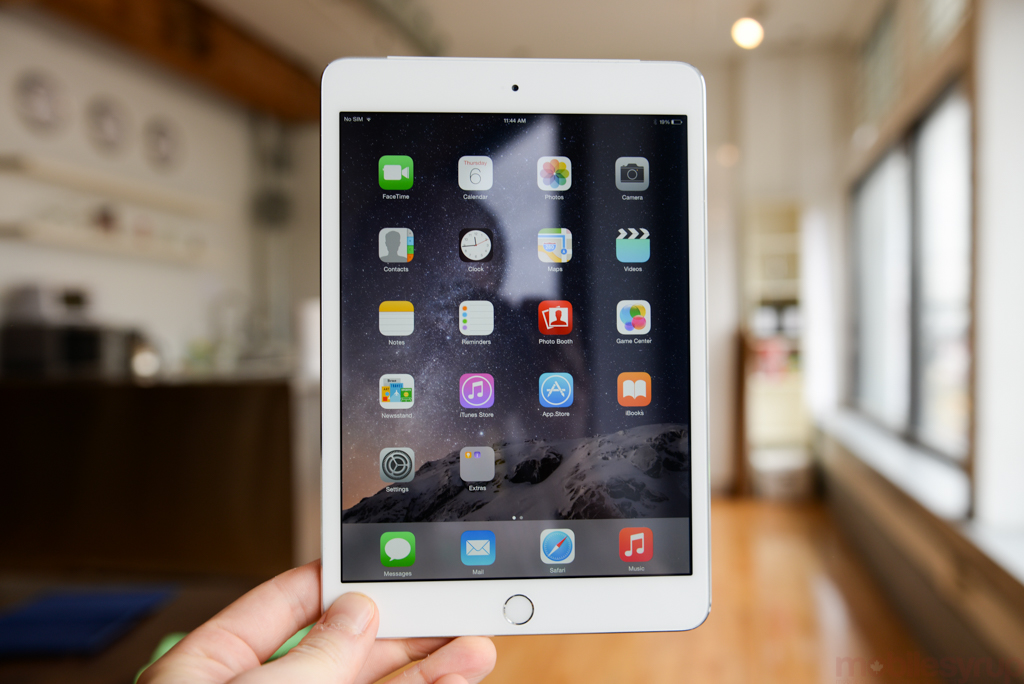
When Apple introduced the iPad mini 3 last month, the Internet was aghast with its level of… sameness. While the iPad Air 2 got slimmer, more powerful, and eliminated the gap between screen and glass, the iPad mini 3 remained identical to its predecessor, beyond the addition of Touch ID and a new gold colour scheme.
Retailing for $110 more the iPad mini 2, Apple is making a bold declaration that it thinks Touch ID is more than enough to justify the mini 3’s asking price. Is it? Is an 8-inch tablet still viable in a phablet-focused 2014 that contains a 5.5-inch iPhone? Will I ever start a review without asking so many questions?
Probably not.
Specs
- iOS 8.1
- 7.9-inch 2048×1536 Retina display
- 1.3 Ghz dual-core 64-bit A7 SoC, M7 motion coprocessor, PowerVR
- 1GB LPDDR3 DRAM / 16,64,128 GB internal storage (no microSD slot)
- 5MP iSight rear-facing camera, ƒ/2.4 aperture
- 1080p video capture @ 30fps
- 1.2MP front-facing camera, 720p video capture @ 30fps
- Wi-Fi (802.11 a/b/g/n/ 2.4G+5GHz) MIMO, Bluetooth 4.0, A-GPS
- Accelerometer, three-axis gyroscope, Touch ID fingerprint sensor
- HSDPA 850 / 900 / 1700/ 1900 / 2100
- LTE 800 / 850 / 900 / 1800 / 1900 / 2100 / 2600
- 200 x 134.7 x 7.5mm
- 341 grams
Design & Display
A quick look at the specs above confirms that the iPad mini 3 is essentially its predecessor with one additional feature and a new coat of paint. Any review of the iPad mini 3 is therefore a referendum on the mini tablet line itself and an investigation of Touch ID’s viability.
Let’s start with the former first. Quite simply, I have fallen in love with the mini 3.
A brief step back: I’ve never really been a ‘tablet guy’. I like a smartphone that can fit in my hand (and my pocket), and for anything requiring a larger screen, I generally reach to my thin and light Macbook Air. Rarely have I felt the need to carry something larger than a smartphone but more portable than my laptop, and thus most tablets in my possession have sat around unnoticed and unused.
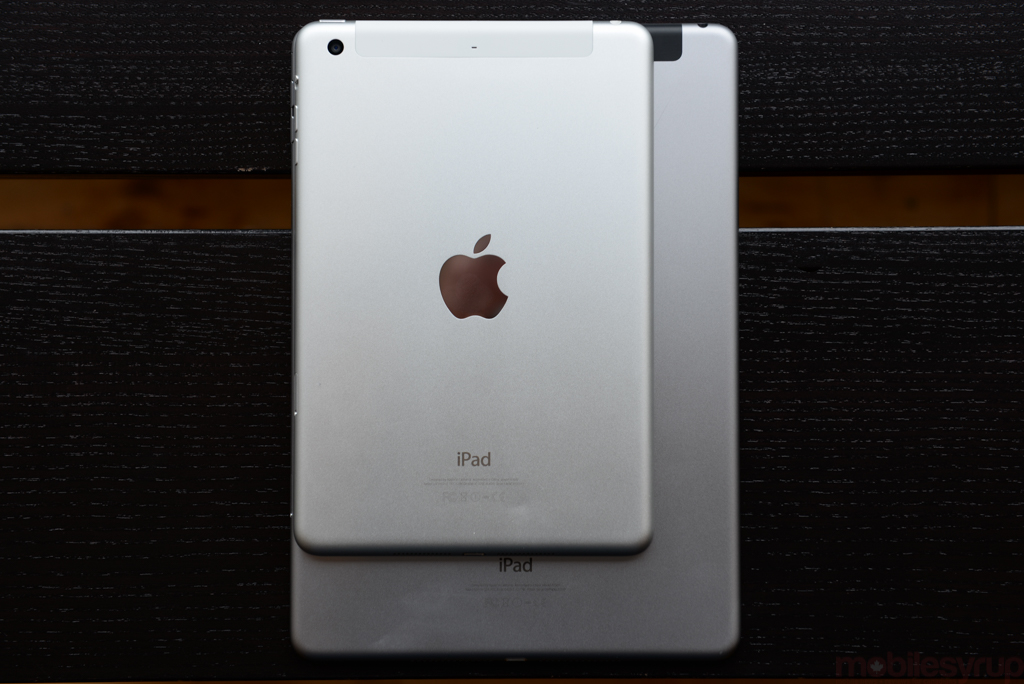
The mini 3, however, hits a sweet spot between size and portability that has forced me to reconsider my daily tech setup.
At 20cm by 13.4 cm, and weighing only 341 g, the iPad mini 3 fits more comfortably in my hand than any other tablet. It rests easily and without effort on my fingers in portrait mode, but the tablet really shines in landscape mode. It’s simply the perfect width to hold between two hands while typing or watching video, and the wide front bezels work well as thumb rests. The iPad Air may be thinner, but it’s also taller and heavier, while the iPad mini 3 is just the right size to take with you without constantly being reminded the device is on your person.
It’s simply the perfect width to hold between two hands.
The comfort factor is significant, as it’s what led to the mini 3 becoming a trusted daily companion rather than something that sat alone and unloved in my laptop bag. I often found myself popping it open on the subway to pass the time with a Kindle book, or choosing it over my laptop when snuggling in bed for late-night Netflixing.
It helps that the iPad mini 3’s screen is so gorgeous. While the iPad Air 2 received a fully laminated display with antireflective coating, I’ll take the mini 3’s superior pixel density (326 ppi) and brightness any day. Even on the lowest settings, the iPad mini’s screen is bright and clear, with viewing angles that would shame most other tablets. It’s simply fun to look at, even when looking at something as basic as black text on a white screen.
While the iPad mini 3 maintains Apple’s well-established design language – wide bezelled glass face married to a sleek aluminum back with chamfered edges – it did provide me with one surprise I’m unaccustomed to with iOS devices. To wit, the tablet can be quite slippery in the hand, especially when grasped in portrait mode. As a founding member of the ‘nude tech’ movement, it pains me to say that the iPad mini 3 is a tablet made to be used with a case.
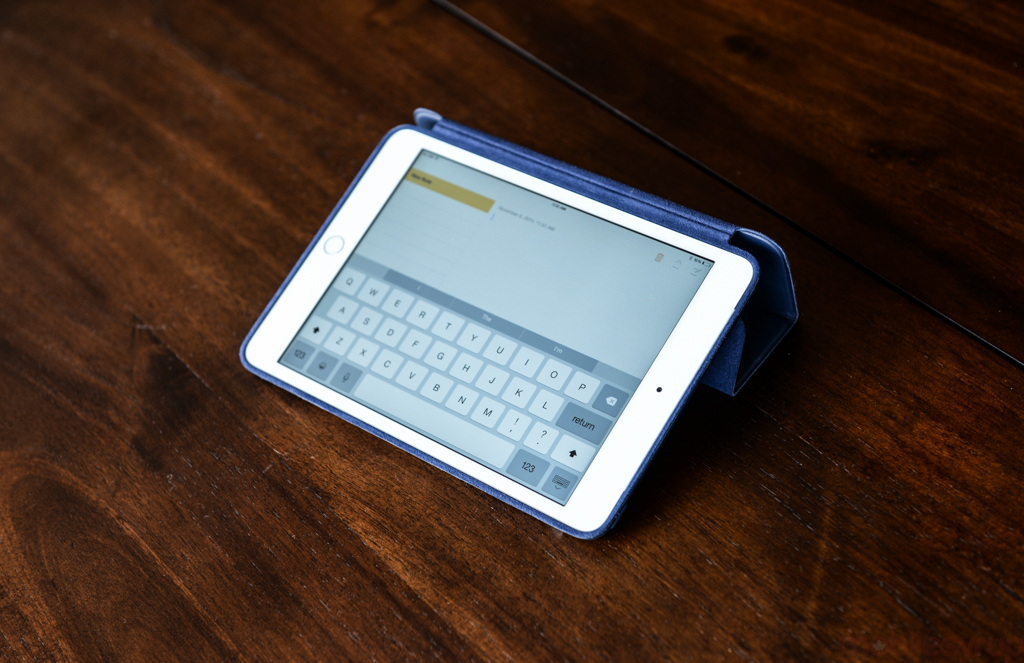
Fortunately, the Smart Case provided to me added the necessary amount of grip without impeding the tablet’s portability. Sadly, there’s no such fix for the iPad mini’s speakers, which are faint and lacking in bass, and typical of a company that prioritizes headphone use over built-in sound.
Apple’s integration of Touch ID, however, demonstrates how well the company can integrate a feature when it really cares. From initial set up (which turns the process of recording your finger print into a visual game) to daily use, Touch ID is simple and painless. Only in the rarest of cases was the tablet unable to recognize my thumbprint from a variety of angles, and only ever on a first attempt. The integration is so good that it makes Samsung’s Finger Scanner implementation on the Galaxy Alpha even worse in retrospect.
Software & Performance
We’ve covered iOS 8 extensively on MobileSyrup, so for the purposes of this review I’ll focus only on the components that pertain specifically to the tablet experience and those that have been unlocked with the release of Mac OS X Yosemite.
As a Macbook Air user, I’ve been excited to try iOS 8’s Continuity features since their announcement, particularly Handoff and AirDrop. Despite an open API allowing third-party developers to take advantage, Handoff, which allows you to stop what you’re doing on one device and pick up again on another, is mostly still limited to Apple-made applications like Calendar, Contacts, and Mail. In addition, Handoff at this point seems limited to transferring states between the same app on both devices – so if you’re a Safari user on your iPad, but prefer Chrome on your Mac, Handoff won’t work.
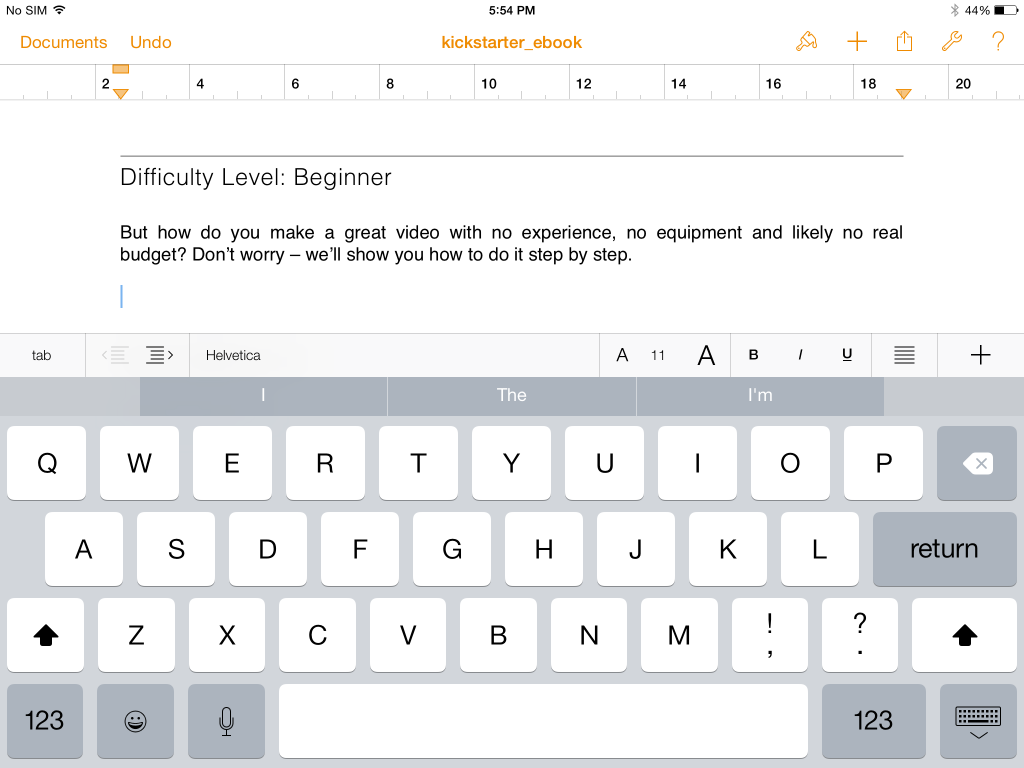
AirDrop, however, which now allows iOS and Mac OS devices on the same Wi-Fi network to share files, works like a dream. Aside from one initial hiccup on my Macbook that resulted in a ‘spinning beachball of death’, file transfers to and from the iPad mini 3 were quick and painless, and there were no issues with sending multiple files at once.
In real-world use the tablet never felt anything but thoroughly modern.
While AirDrop is extremely convenient for simple things like sharing a photo, the real benefit will be for productivity-minded users that see the iPad mini as a device for content creation as much as consumption. Apple’s iWork suite (Pages, Keynote, Numbers) comes pre-loaded on the iPad mini 3 and function possibly better in tablet form than they do on desktop thanks to last year’s redesign. Aside from some rather embarrassing issues with GarageBand file compatibility, I was able to move important files to my iPad and edit or add to them without hassle, instilling confidence that I could leave my laptop behind and still be productive throughout the day.
The strength of Apple’s app ecosystem is well established, and third-party apps perform exactly as you’d expect: smooth and powerful. The iPad mini 3 might feature last year’s kit, which leaves it in the middle or back of the pack in terms of performance testing, but in real-world use the tablet never felt anything but thoroughly modern. Whether that’s credit to the staying power of the 64-bit A7 processor, or Apple’s tight integration between hardware and software, I’m not entirely sure, but the bottom line is that the software experience on the iPad mini 3 doesn’t suffer at all for lacking the latest and greatest.
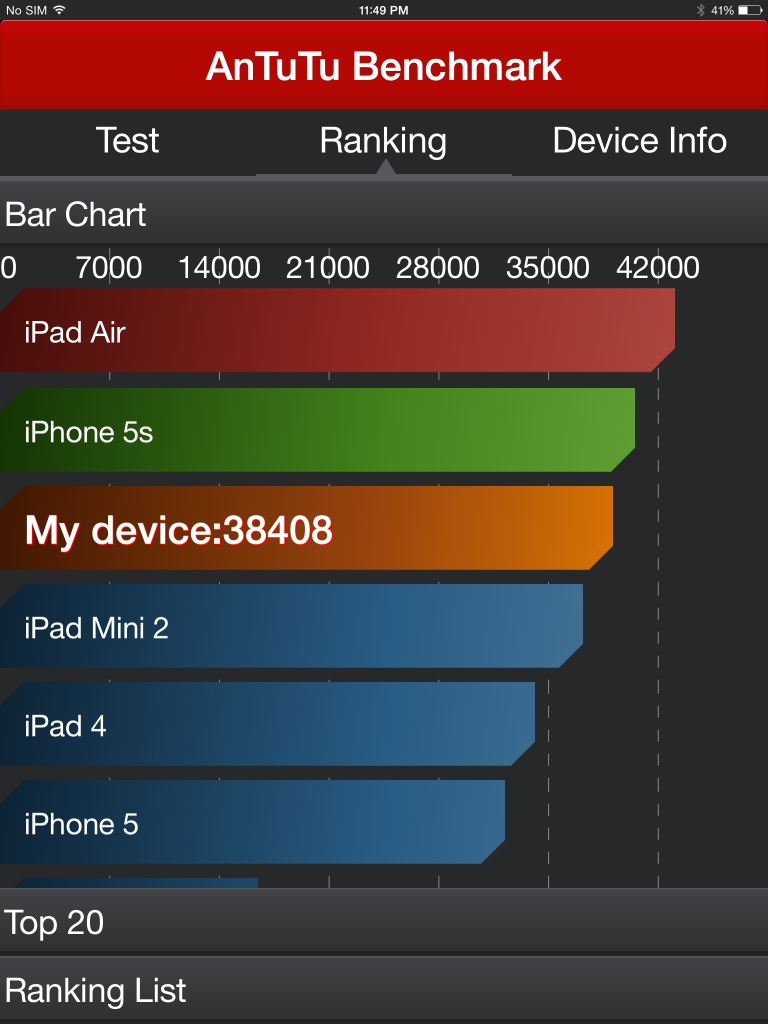
When it comes to Touch ID, however, the iPad mini 3 might suffer from being too soon to the game. While the hardware integration of Touch ID is essentially perfect, there are few software opportunities for Canadians to take advantage of. In terms of third-party applications with Touch ID support (Mint, Evernote, Dropbox, etc.), the feature is predominantly being used to provide a convent security layer, which is useful but by no means compelling (with the possible exception of 1Password, which seems as though its destiny was to be integrated with Touch ID). Canada is also unlikely to receive Apple Pay until late 2015, which means that Touch ID for the most part exists as an amazingly integrated hardware feature waiting for services to really make it sing.
Two other minor issues also grate. iOS 8 is long overdue for multi-user accounts and the ability to run two applications at the same time on the same screen. These issues are well known, but the iPad mini 3’s effectiveness as a content creation and consumption device make them stand out more so. The iPad mini 3 is a device begging to be passed around, but it’s hard to do that if you can’t partition your sensitive information or app preferences from your friends and family.
Camera
While on vacation in scenic Ireland recently, I happened to be travelling with an oldish gentlemen who preferred to use his last-gen iPad Air to take photos of our pastoral setting, leaving me to snicker at my elder in a way only youth can. Imagine my surprise when many of his photos turned out not good, but great.
I get the cultural stigma; outside of wearing Google Glass or riding a Segway, taking a photo with a tablet is one of the most universally derided technological activities. Certainly the requirement to keep the iPad mini 3 in a case for grip left me feeling no less ridiculous as its smart cover dangled underneath my hands while shooting. But much like my holiday travelling companion, I was quite happy with the results.
The iPad mini 3 sports a 5MP iSight lens with an ƒ/2.4 aperture, placing it somewhere between the iPhone 4 and 5 in terms of generational hardware. But with Apple, the sensors have always been the secret to the company’s photographic dominance, and the mini 3 features a sensor good enough to produce a quality exposure in well-lit scenarios. In low-light conditions the tablet invariably suffered, and I wasn’t as happy with HDR exposures as I normally am with other Apple hardware, but in general shooting with the iPad mini 3 was a pleasant surprise.
The mini 3 also sports Apple’s impressive 1080p video recording with built-in stabilization, although the simple fact that shooting video with a tablet requires two hands did wonders for stability overall. Unfortunately, while the mini 3 does feature support for time-lapse video, it can’t produce the slow-motion video that seems to be all the rage these days.
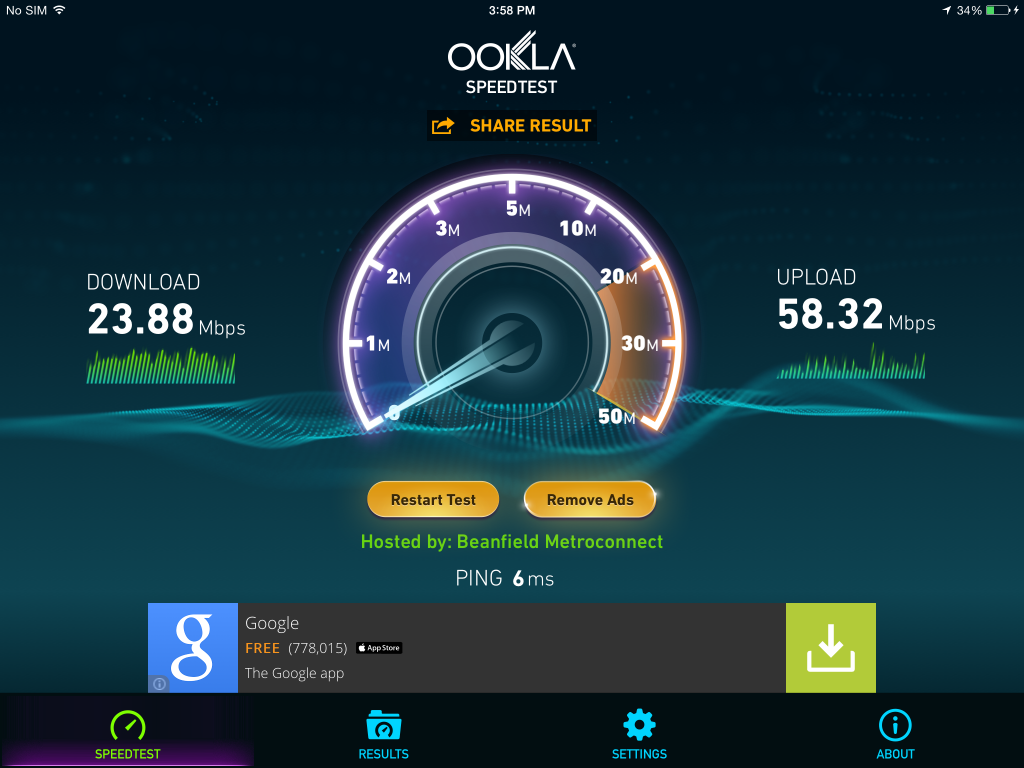
Battery Life and Connectivity*
Apple claims the iPad mini 3 will provide up to 10 hours of battery life for general use (web surfing, video, music, etc.). I found that number to be way off base. The iPad mini 3 provided me vastly greater battery life with daily light to moderate use. So much so that the mini 3 seems similar to my Haswell-based Macbook Air, in that I rarely thought of or needed to charge the device – a refreshing change from most Apple mobile products. I might keep my tablet screen dimmer than most (the mini’s screen is so great that I rarely needed anything more than the lowest setting), but the average user will be quite pleased with the mini’s battery life.
The iPad mini 3 sports Bluetooth 4.0 and dual-channel MIMO 802.11n Wi‑Fi, which meant that in performance testing I was generally hitting the theoretical limit of whatever connection I was on (note to self: talk to Bell about a better Internet package). In real-world usage, I saw the performance most when using AirDrop to transfer large or multiple files quickly.
*Battery life and connectivity testing were both performed on Wi-Fi only.
Conclusion
Yes, the iPad mini 3 is essentially the same as last year’s model, but that means it’s also a great tablet. In reflecting on why the iPad mini 3 had suddenly inspired an interest in tablets where none had previously existed, I realized it came down to trust. I trust in the mini’s form factor to be portable yet functional; I trust the tablet’s battery life to easily get me through the day; I trust the wide selection of apps available to provide both entertainment and productivity; I trust that everything I do will look great on the iPad mini 3’s beautiful, bright screen. The iPad mini 3 proves that there is still a space in a phablet world for a well-made tablet.
Of course, all of that could have been said about the iPad mini 2, so a recommendation for this tablet comes with caveats. The 16GB mini 3 currently retails for $439 CDN, which is $60 more than the nearly identical 32GB mini 2. While I truly believe that Touch ID will play a major role in the future of iOS, for Canadians that future will not come until at least the arrival of Apple Pay. If you need a great tablet now, and have no interest in enhanced security or 21st century payments, the iPad mini 2 is easily the superior choice.
MobileSyrup may earn a commission from purchases made via our links, which helps fund the journalism we provide free on our website. These links do not influence our editorial content. Support us here.


